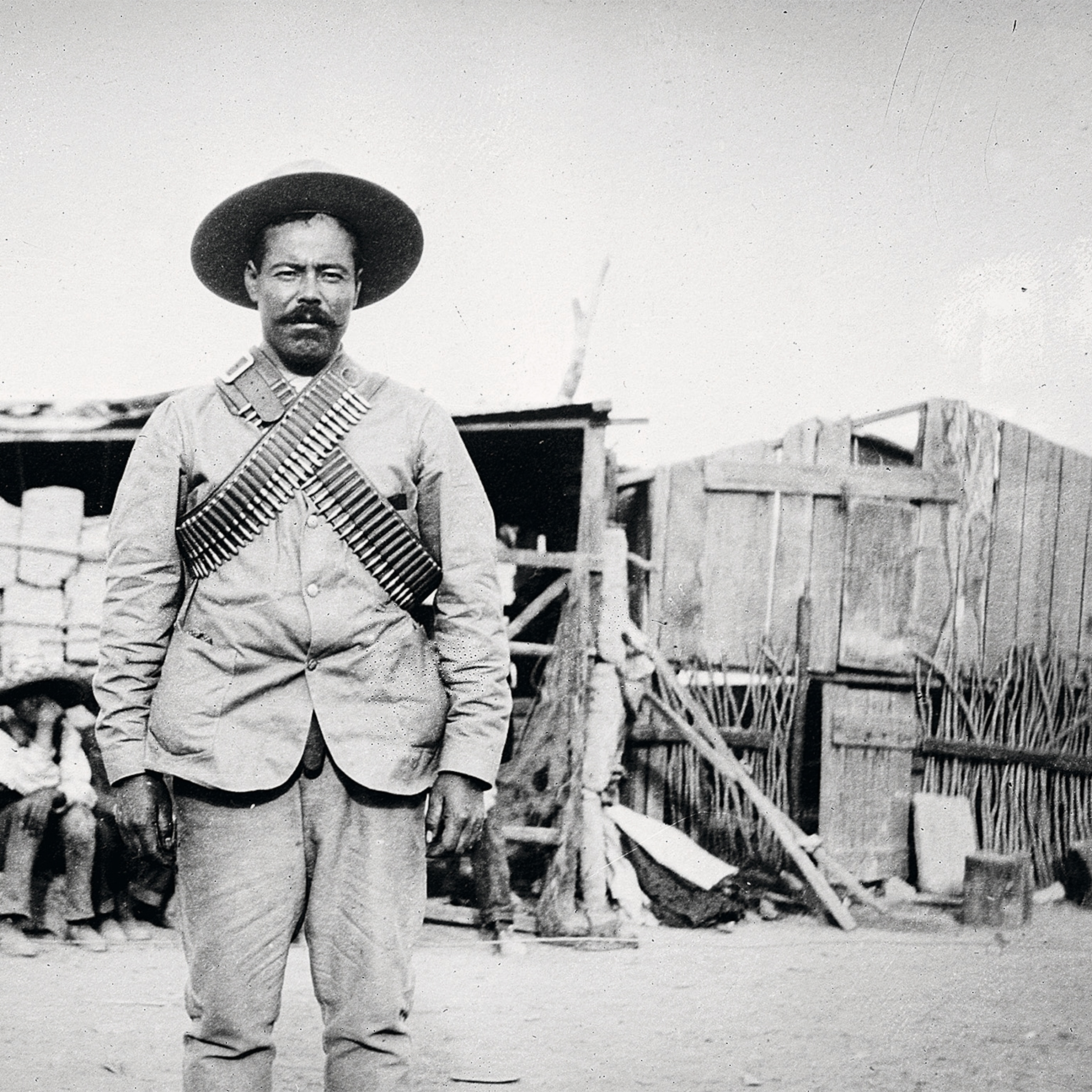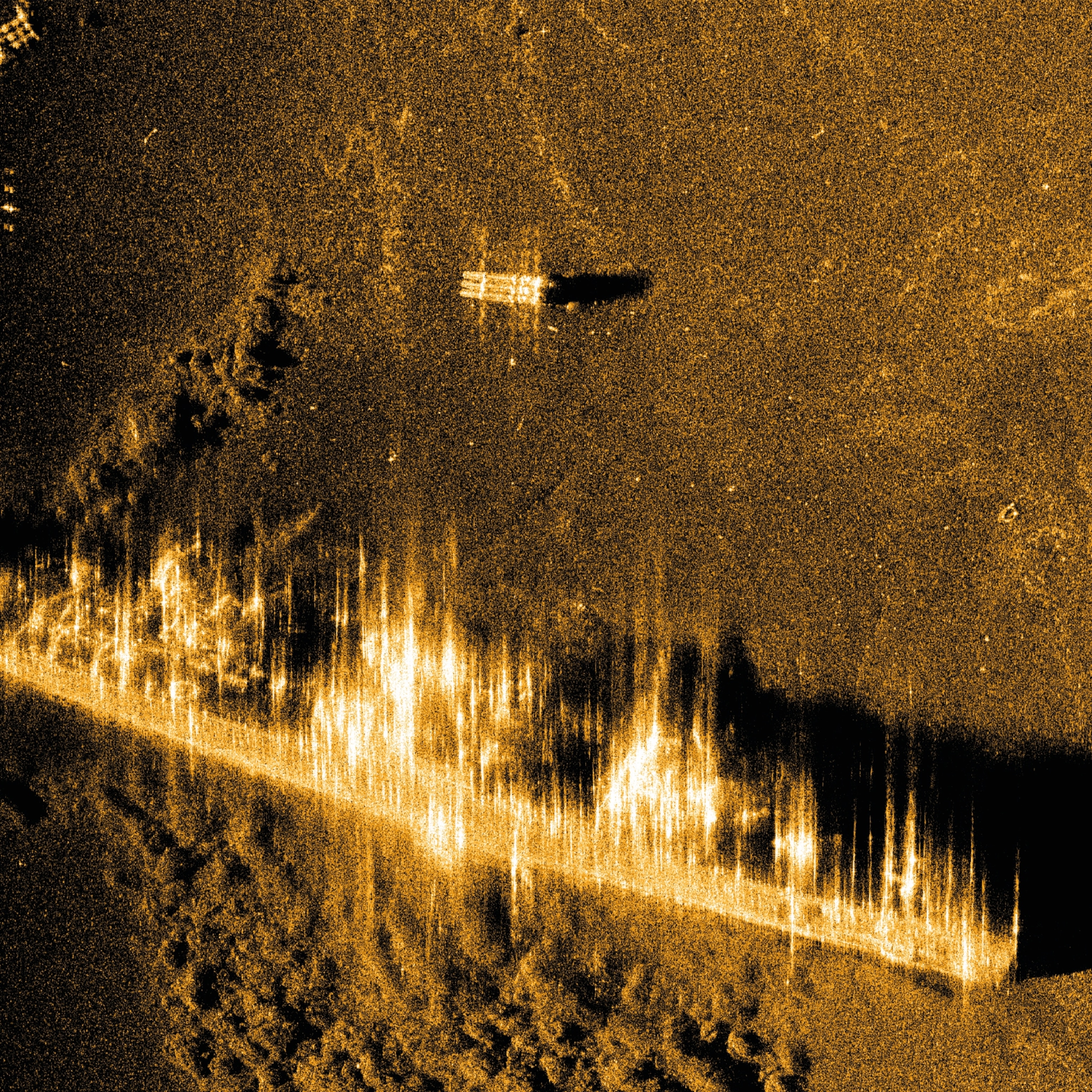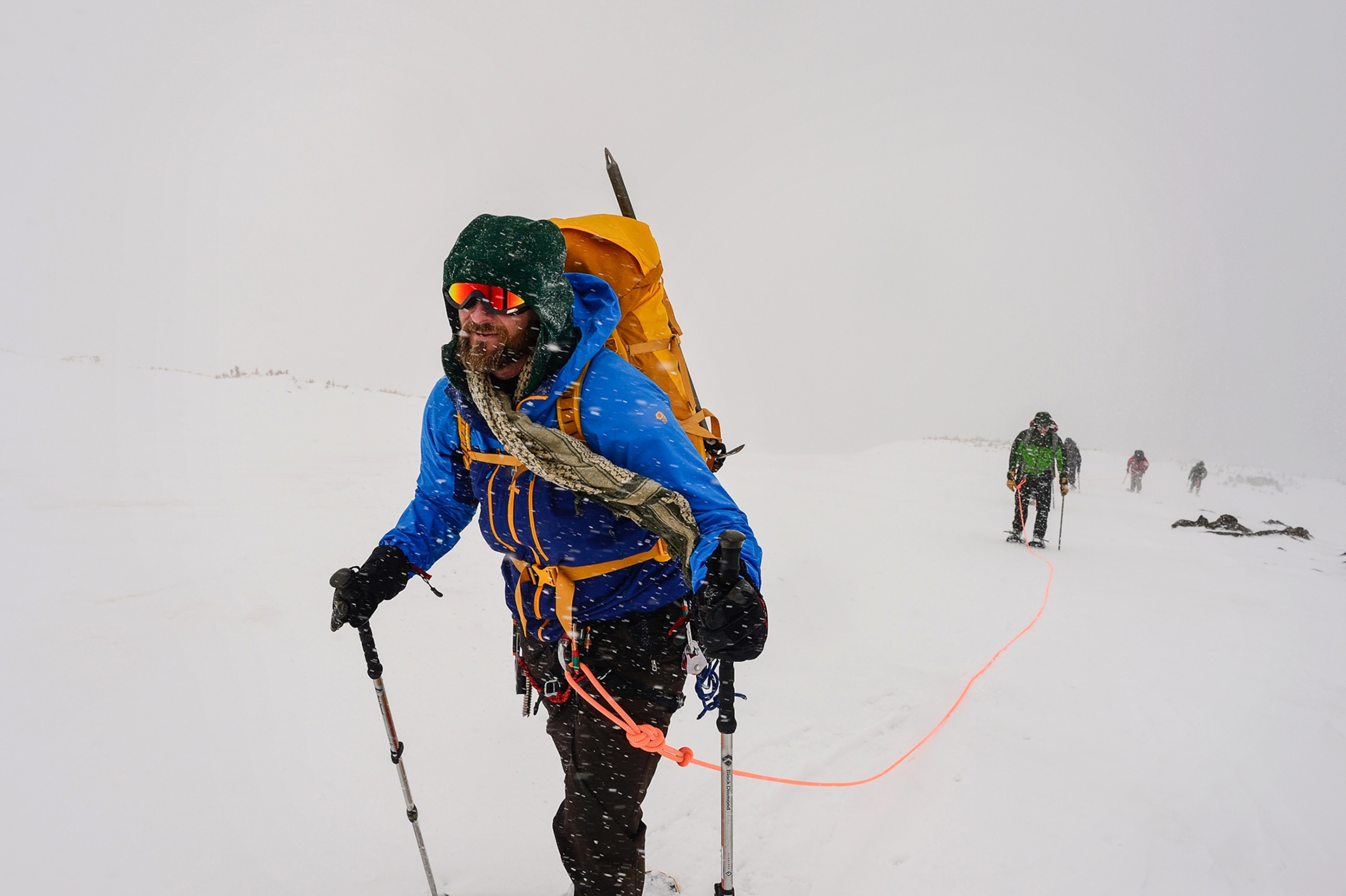
Nick Watson: Bringing the Wilderness Solution to Vets
Mountaineering provides a powerful boost to veterans returning from war.
A climber suddenly falls into a crevasse and Nick Watson dives into the snow with his ice ax. The rope goes taut and Watson, a bearded, muscled man, digs in like an anchor, and the climber is caught.
"You OK?" shouts Watson.
There is no answer from the climber down in the hole. He is unconscious or injured, perhaps bleeding.
"Don't worry, we'll get you out!" yells Watson anyway.
In a matter of minutes, Watson has tied off the dangling climber, slammed two stakes into the snow, and set up a five-to-one pulley system. Using his own body weight, Watson gradually hauls the injured mountaineer out of the crevasse.
Back on the surface, the unconscious climber suddenly awakes. "Wow! That really works."
It was a simulated mountain rescue—a teaching scenario for a group of former soldiers, Iraq and Afghanistan veterans, all standing in the snow.
"This is the way you save someone's life," says Watson.
He's talking about basic crevasse rescue techniques, but he might as well be talking about the organization he founded, Veterans Expeditions, or VetEx, a nonprofit that takes veterans into the outdoors.
"Vets often go from a world with deep camaraderie, commitment, and excitement to a world where they are isolated, at loose ends, and bored," Watson says in explaining the concept behind the program. Watson speaks from experience—he is a former U.S. Army Ranger—and he knows just how psychologically perilous the military experience can be: Veterans commit suicide at more than twice the rate of civilians.
Having worked as an alpine guide and a counselor in wilderness therapy programs for over a decade, Watson, 40, also believes in the healing force of nature and was convinced that a vigorous outdoor experience would be tonic for veterans, a way for them to "reconnect with fellow soldiers, get outside, and push themselves in a healthy environment." VetEx—created with another veteran, Stacy Bare—was the outgrowth of that conviction. In its first year, 2010, VetEx took 16 veterans into the mountains for climbing; in 2011, it was over 100; in 2013, almost 300.
By consciously replacing the fellowship of arms with the fellowship of the rope, VetEx hit on a novel remedy for readjustment to civilian life—a soldier by soldier, hands-on approach that larger veterans organizations like the Department of Veterans Affairs (VA) and the Veterans of Foreign Wars (VFW) couldn't provide.
In Watson's family, joining the military was part of the natural progression of manhood: One grandfather served in World War II, the other in Korea; his father served in Vietnam. He spent over four years in an elite Army unit, the Third Ranger Battalion, on numerous international deployments.
"I pushed myself in the military and had many intense experiences," says Watson, "but things changed for me when two of my Ranger buddies killed themselves. These were guys I grew up with. I was there in seconds after they shot themselves, but there was nothing I could do."
He left the Army soon afterward, but it took years for him to recover from the trauma of those deaths. He traveled around the country, worked seasonal jobs, and slowly found solace in the wild. "A therapist I was seeing at the time, a very wise woman, said something that changed my life: 'You aren't your experiences; you are how you process your experiences.'"
Thoughtful and passionate, with a sturdy body and three fingers missing on his right hand from an oil rig accident, Watson has been running the organization on his own since 2011, when Bare moved on to direct the Sierra Club's veterans programs in New England and North Carolina. "We're a grassroots organization," says Watson. "It's friends telling friends." VetEx has only one paid employee—Watson—and calls on volunteers to run the outdoor "meetups" throughout Colorado.
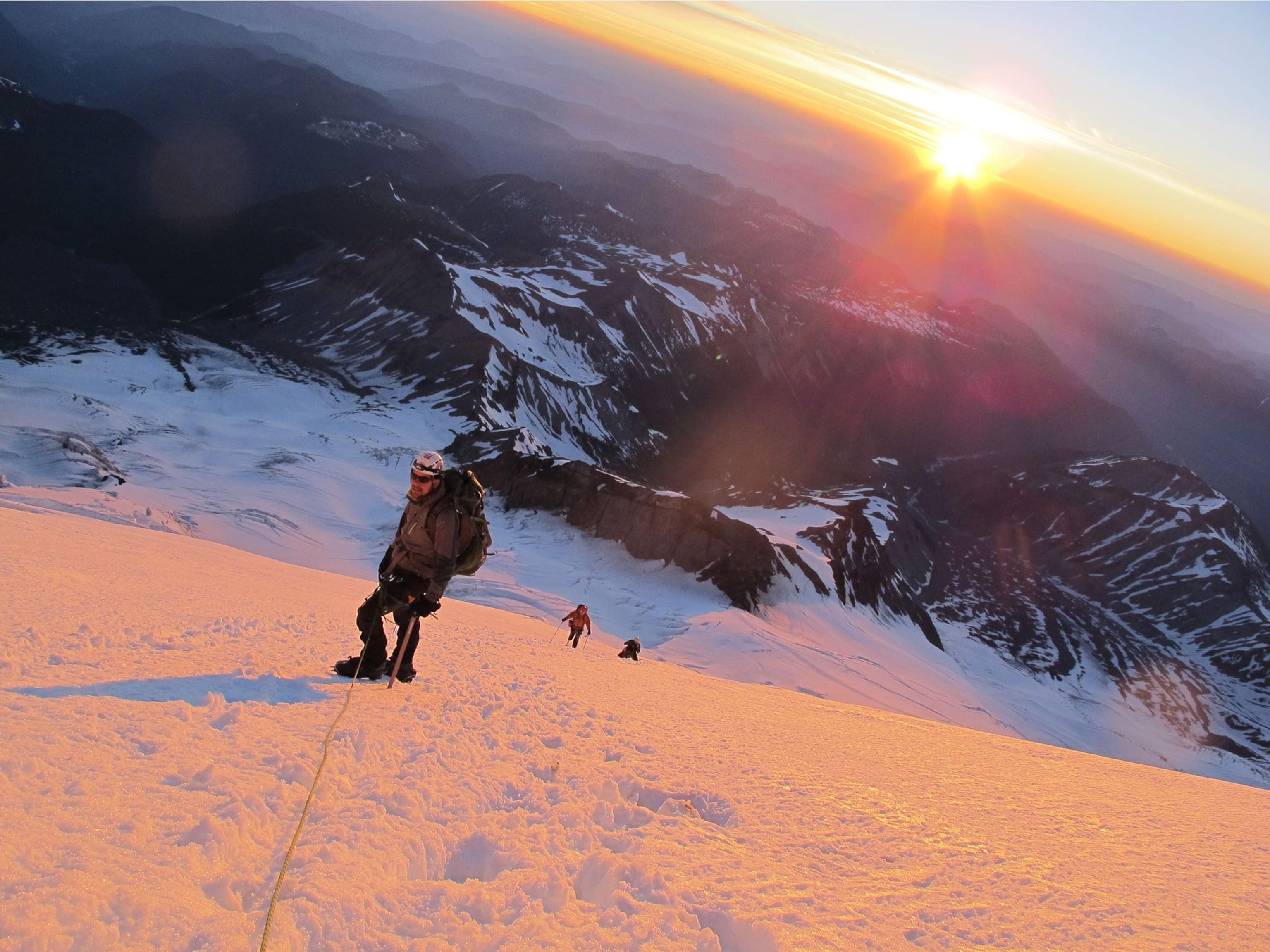
"Our biggest challenge right now is funding," says Watson, who relies on his partner, journalist Chris Kassar, 37, to work as VetEx's unpaid "PR and 'Fun' Raising Director." Keen shoe company and Kahtoola Snowshoes are their only equipment sponsors. "We get new vets outdoors every month, and we're changing their lives. We don't need a lot of funding, just enough to keep going."
Watson, who was named a National Geographic Adventurer of the Year for 2014, along with Stacy Bare, says his goal is to get thousands of vets outdoors by 2020, training veterans to lead trips all over the country.
"Immediate, Intense Trust"
"What Veterans Expeditions does, at its core, is re-create the positive aspects of the military without all the negatives," says Demond Mullins, 32, an Army veteran who saw combat in Iraq in 2004-2005.
Meeting up with Veterans Expeditions was so important to Mullins, a professor of sociology at Indiana University of Pennsylvania, that he flew across the country just to spend a couple of days climbing with fellow vets. In the snow-covered Rockies above Leadville, Colorado, they practiced technical mountaineering skills, such as moving as a roped team, self-arrest with an ice ax, crevasse rescue, crampon technique, and ascending fixed lines.
Mullins has participated in more than a dozen adventures with VetEx. "On every trip I meet new vets," he says, kneeling in the snow at 11,000 feet (3,353 meters), adjusting the carabiners on the climbing ropes for a crevasse rescue scenario. "There's always this immediate, intense trust. We have the same point of reference. We know what it's like to put our lives on the line for each other."
Mullins, who is built like an Olympic sprinter, loves being outdoors, "working as part of a team, relying on one another—things we all learned in the military, but [now] without the threat of violence."
Epidemic of Suicide
According to a VA report last year, 22 veterans kill themselves every day in the U.S., double the number of suicides among nonveterans. In 2012, 349 active-duty soldiers killed themselves—more than the 295 who died in combat in Afghanistan that year. Statisticbrain.com reports that 4,487 American troops died in Iraq, about half the number of soldiers who kill themselves every year. In Afghanistan, 2,229 Americans have died; more veterans than that will kill themselves at home in the U.S. before Thanksgiving this year.
The U.S. military is aware of the problem, if uncertain what to do about it. The VA has set up a crisis hotline and a website offering help through direct phone contact, online chats, and other resources, but VA hospitals are notoriously backlogged and slow to respond to veterans struggling with mental illness. Brigadier General David Harris recently wrote on the Eglin Air Force Base website that "it is important for us to re-address topics such as suicide prevention and awareness." He encourages friends and family to be alert to the "clues and warnings" of potential suicide, such as depression, drug or alcohol abuse, impulsiveness, and reclusiveness. "When we observe our wingman appearing depressed ... request help early on."
Clearly, Iraq and Afghanistan veterans aren't the only ones overwhelmed by despair: Almost 70 percent of suicides among veterans are by Vietnam War soldiers, 50 years old or older, a community that suffered a particularly hard return to a society that was largely hostile to the war they fought.
And suicide isn't limited to those who saw combat. A recent Department of Defense study, citing heavy drinking and depression as root problems, found that almost 80 percent of suicides are by soldiers who did not experience combat. A 2014 report in JAMA Psychiatry revealed that almost 20 percent of Army enlistees struggled with depression, panic attacks, suicidal thoughts, or "intermittent explosive disorder"—a condition characterized by uncontrollable attacks of rage—before they joined the service.
And then there is the pervasiveness of post-traumatic stress disorder. One in five veterans of Afghanistan or Iraq and a stunning 30 percent of Vietnam vets have PTSD. Other soldiers have returned home with a traumatic brain injury (TBI), often caused by the concussive force of an improvised explosive device (IED). Unlike scars and amputations, these are the "invisible injuries" of war.
Gut-Level Understanding
Luke Adler, 28, who served in Afghanistan in 2007-2008 and 2009-2010, is in Leadville for the climb. He is wearing his military-issue camo backpack and heavily insulated khaki military pants made for the extreme cold. In Afghanistan, he had been hit by IEDs twice and has a TBI. "This is the thing," he explained, as he adjusted a pulley system for hauling up an injured or unconscious climber: "You do epic things in the service. It's life or death. When you come home to civilian life, you really miss that intensity."
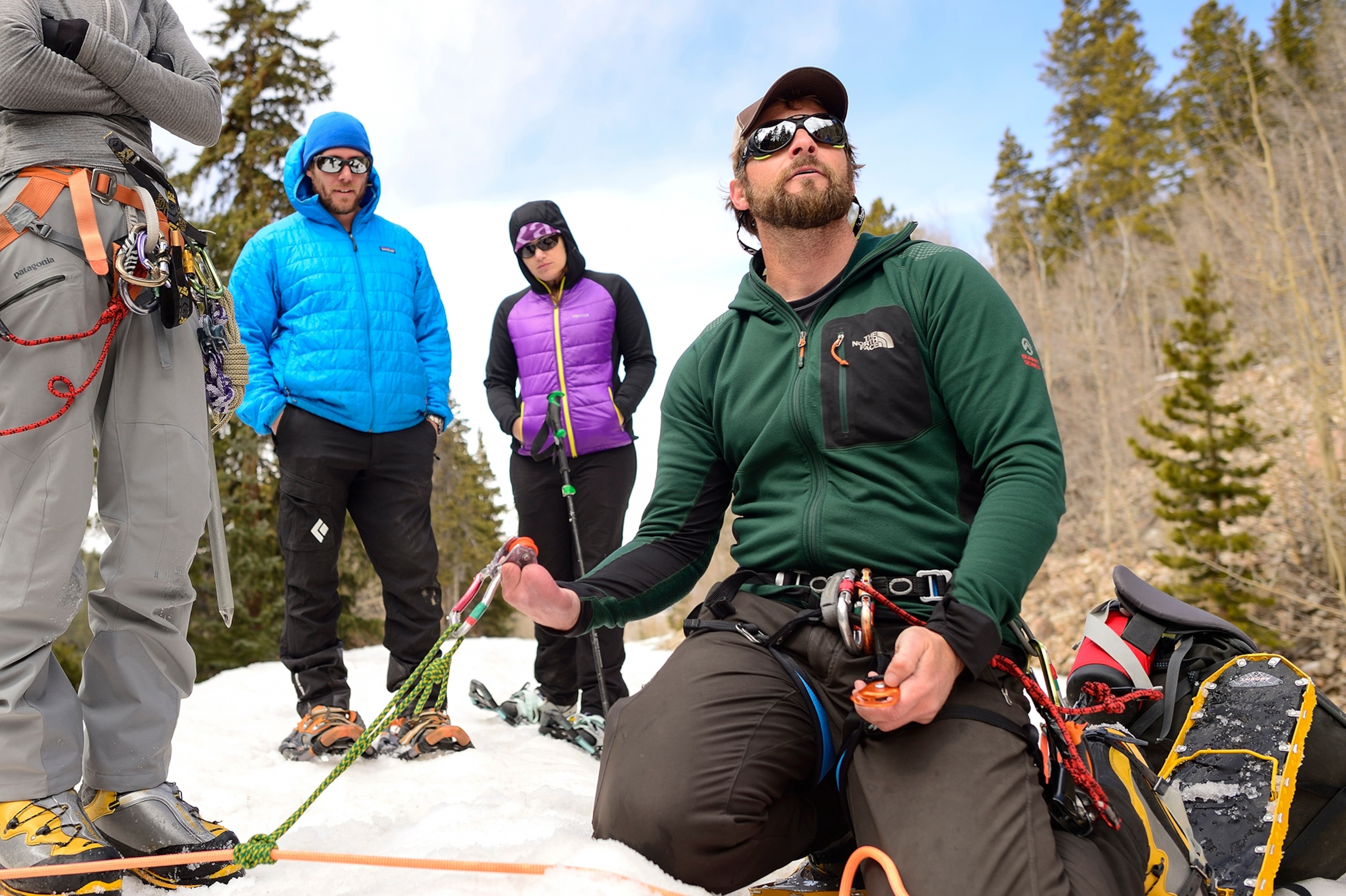
After he got out of the 82nd Airborne, Adler returned to his parents' home in Iowa and fell in with what he describes as a "bad group of vets" who were using drugs and alcohol to get through the day. "It took about a year to straighten myself out. I realized all I was doing was hurting myself and everyone who loved me." Currently enrolled at Colorado State University, he is preparing to become a high school social studies teacher.
All of the vets on the Leadville outing experienced combat. Here in the mountains, they fall easily into conversation with each other about their service. It is a singular brotherhood. Their experiences were too difficult for their civilian counterparts to fathom.

Samantha Tinsley, 34, earned a degree in international relations before joining the service as an enlistee, not an officer, and was deployed all over the world for a decade. John Brumer, 27, led his own 12-man squad through the mountains of Afghanistan (and is now starting his own brewery in North Carolina). Robert "Robbie" Hayes, 28, and John Krueger, 26, were in the same unit, fighting together in Afghanistan's opium-ridden Helmand Province. Lee Urton, 32, a former Marine, was part of the initial invasion of Afghanistan and says he "lost something in the war, but I would never take back a minute of it."
It's a common sentiment. They have suffered, but they have no regrets about joining the military. Each man and woman did something that the vast majority of Americans will never do: defend their country with their lives. One participant sketches a scene of combat with just a few words and everyone immediately knows what he's talking about. They nod in agreement. There is no need for apologies or bragging. "They get it," as Watson says. "They understand each other on a gut level."
The Climb
The next morning, after a day of training in the snow, the VetEx team snowshoes to the Tenth Mountain Division hut below the west ridge of 13,209-foot (4,026-meter) Homestake Peak. This hut is a fitting redoubt for the team to organize their attack on Homestake, only intermittently glimpsed through the swirling blizzard.
The Tenth Mountain Division was created during World War II specifically to train soldiers in winter survival, skiing, and mountain warfare. The division trained at Camp Hale, built at an elevation of 9,300 feet (2,835 kilometers), 17 miles (27 kilometers) north of Leadville. In 1945 the Tenth Mountain Division breached the Apennine Mountains and played a pivotal role in the liberation of northern Italy. Some 4,000 "ski troopers" were wounded, and 992 lost their lives.
By now the vets, many of whom scarcely knew each other 24 hours ago, are good friends. They're sharing their life stories and scheming to go climbing together in the near future. Wars are fought outdoors, and returning to the outdoors is a salve.
The night before, as we bunked in the homey Leadville Hostel, Watson had told me that "something happens on these trips that I never saw with civilians. There's this incredible bond that forms, this connection. These men and women need each other. They were trained to work together toward a common goal, and that's exactly what mountaineering is all about."
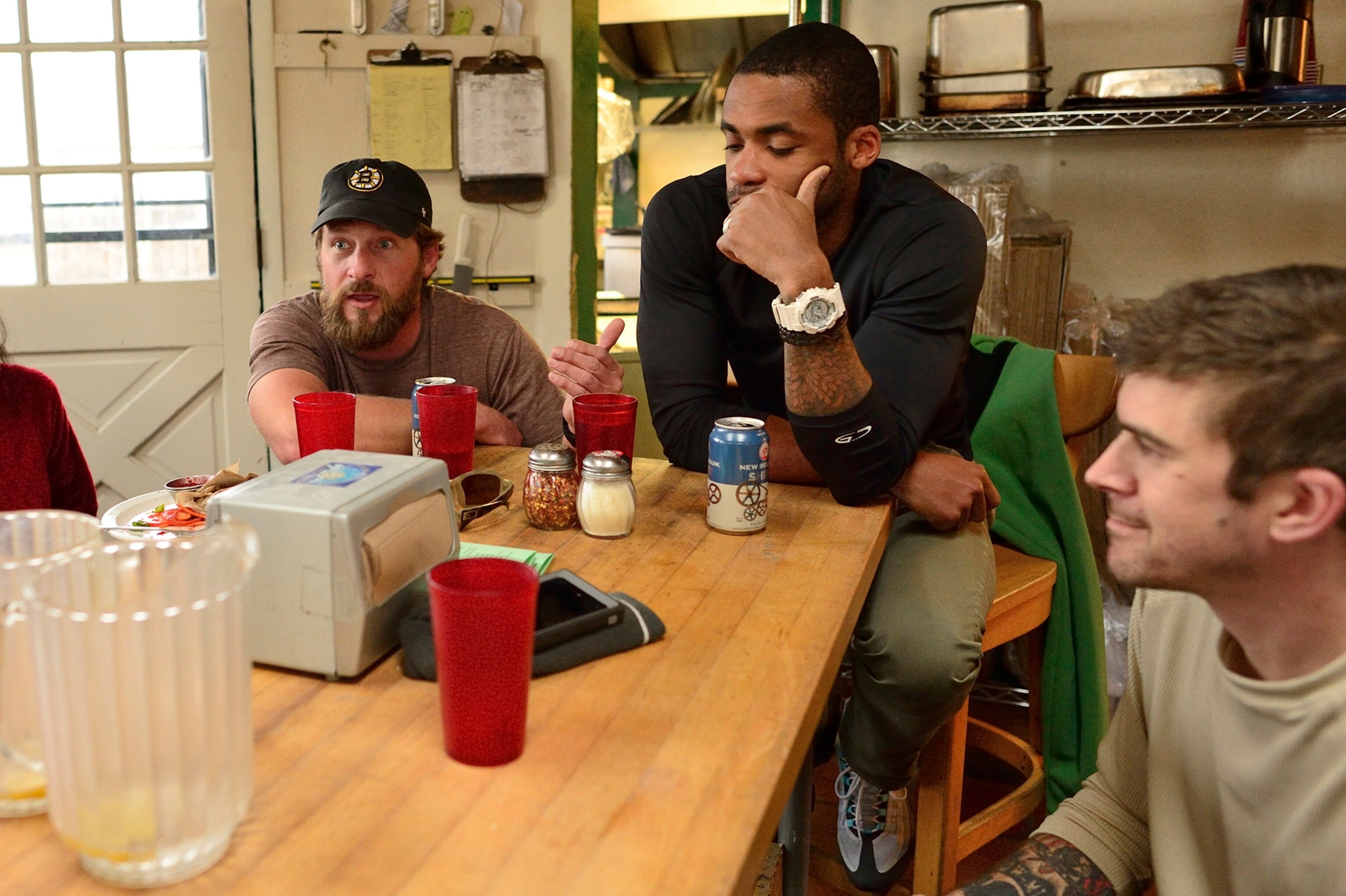
This summer, the vets of VetEx plan to attempt Mount Rainier and Mount Hood. In 2015 they're mounting a difficult expedition to 20,322-foot (6,194-meter) Denali in Alaska, the highest peak in the United States. Watson, along with Chris Kassar and vet Dave Lee, 35 (who served in the modern Tenth Mountain Division in Bosnia), are heading to Denali in two weeks to attempt the West Buttress route as a scouting mission.
As for Homestake, after hours of climbing, the team is stopped by a howling whiteout and forced to turn back before reaching the summit. "Couldn't see a thing," Watson said afterward. "It was great training. Just like in the military."


